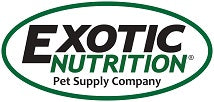Hand-Feeding Baby Opossums: A Guide for Orphaned or Rejected Joeys
Caring for an orphaned or rejected baby opossum can be a delicate task, but with the right information and supplies, you can give these tiny marsupials a second chance at life. Whether you’re a wildlife rehabilitator or a dedicated pet owner, proper feeding and care are critical to their development.
When to Begin Hand-Feeding

Newborn opossums (referred to as joeys) are typically attached to their mother's nipple and should not be removed unless absolutely necessary. If the joey is truly orphaned or rejected, feeding should only begin once the baby is warm and stable. Cold, dehydrated joeys cannot digest formula properly and may not survive feeding attempts.
Step 1: Warming the Baby
If the joey feels cool to the touch, warm it gradually using a Pet Warming Pad set on low or a warm towel. Never submerge the baby in water or use direct heat, as rapid temperature changes can be fatal. Once the joey reaches a normal body temperature and becomes more active, feeding can begin.
Step 2: Hydration
Before introducing milk replacer, it's often best to rehydrate the joey with an electrolyte solution like Pedialyte or a diluted sugar-salt water mix. This step is especially important if the joey appears lethargic or dehydrated (sunken eyes, wrinkled skin).
Feed small amounts every 2–3 hours until the joey begins to regain energy and strength.
Step 3: Feeding with Specialty Milk Replacer
Once the joey is rehydrated and stabilized, you can begin feeding with Specialty Milk Replacer. This premium formula is specially designed for marsupials and provides the essential nutrients, fats, and proteins required for healthy growth and development.
Feeding Guidelines:
-
Use a small syringe or feeding nipple (Exotic Nutrition offers various feeding tools for precision and safety).
-
Feed warm—not hot—milk replacer at body temperature (around 100°F).
-
Offer formula slowly to avoid aspiration (milk entering the lungs).
-
Feed every 2–4 hours, depending on the joey’s age and condition.
-
Stimulate urination and defecation after each feeding by gently rubbing the genital area with a warm, damp cloth—this mimics the mother’s cleaning behavior.
Tip: Use a digital scale to monitor the joey’s weight daily. Gradual weight gain is a good sign of healthy development.
Housing the Baby
Baby opossums need a warm, quiet, and draft-free environment. A small box or carrier lined with soft bedding works well. Use products like All-Natural Nesting Material and avoid loose threads or fabrics that could entangle the joey.
Keep temperatures between 85°F–90°F for neonates, reducing gradually as they grow older. Use a thermostatically controlled heating pad or heat lamp (placed outside the enclosure) to maintain warmth.
Weaning and Transitioning to Solid Food

As the joey matures (usually around 6–8 weeks), you can begin introducing solid foods:
-
Opossum Complete Food: Nutritionally balanced for adult and juvenile opossums.
-
Fresh fruits and insects: Small portions of safe fruits, along with treats like Bulk Dried Mealworms, offer enrichment and nutrition.
-
Provide clean water in a Stainless Steel Feed Dish or a shallow bowl.
Transition gradually by offering soft foods alongside formula, reducing milk feedings over time until fully weaned.
Cleaning and Hygiene
A clean environment is critical to prevent illness. Use Kage Kleen Cage Cleaner weekly (or more often if needed) to sanitize the enclosure. Always remove uneaten food promptly and wash feeding tools thoroughly after each use.
Final Thoughts
Raising a baby opossum requires patience, care, and the right tools. With Exotic Nutrition’s Specialty Milk Replacer, you're giving orphaned joeys the nutrients they need to survive and thrive. From newborn care to weaning, our full line of marsupial supplies supports every stage of development.
__________________________________________________________________________________________________________________________________________________________________________________________________________________
Ready to Shop? Shop By Pet or Shop By Category
Want Discounts? Click here to subscribe to email and SMS marketing
Got Questions? Browse more free Blogs or Contact Us with any inquiries regarding our products.
Notice: Exotic Nutrition cannot provide specific care guidelines on an individual basis. Please consult a veterinarian or experienced breeder.
Exotic Nutrition is proud to serve hundreds of universities, zoological parks, veterinarians, research centers and other institutions seeking to advance the health and well-being of exotics worldwide. See a full list of institutions using our products here.
Exotic Nutrition has a heart for animals in need. Through regular donations to rescues, rehabilitators, and special fundraiser events, Exotic Nutrition is making a significant impact in the lives of animals. See a full list of our charitable donations here.

Comments (11)
I found a baby near my side door to my backyard. It was really hot today and laying on its side. I immediately gently poured some water on it to cool it off and the surrounding area. Within 5 min it started moving and by 15 min it started walking. I still don’t see mom and its in the same spot. It has been walking around but also laying still. Seems to be in good shape. Its fairly warm tonight so not sure what to to.
My neighbors just found a baby and dont know how old they are. We wrapped in a towel and are trying to give the recipe about of thr water sugar mix
I found a baby opossum. I am not sure his age or what to feed him. I bought puppy formula he drank 2 sips from a bottle with a long nipple. I really need to know how old he is. How can I determine his age?
Have a baby in my yard want to help the little fellow survive
I am confused by the above recipe. Exactly how much esbilac powder, and lactaid do I use? I just mixed all the above ingredients other than those. Is it 1/3 cup of esbilac? It just says 1/3 with no units. Then lactaid directions are a bit confusing. Please respond asap. I just found 2 babies. Each are 50 grams.
Leave a Comment